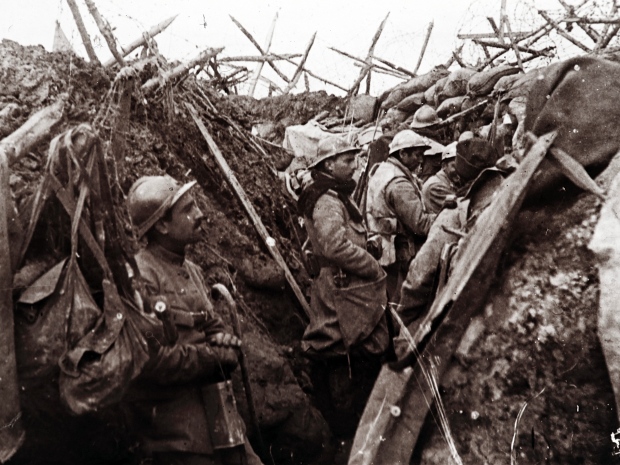Now Largely a Defensive War.
Casualties High, War Aims Hardening.
Special to The Great War Project
(16-17 January) Although the Western Front is mired in stalemate, there are still attempts, on both sides to break out of it.
They are all futile.
The mood is shifting in Allied capitals. A negotiated peace is now out of the question. The Allied war aim in 1915 according to historian Max Hastings is “to clear the whole of France of the enemy and to regain Belgium.” Attaining this goal requires “repeated and incessant attacks…an enormous effort.”

Barbed wire is so thick in some areas of the Western Front, it makes the movement of soldiers nearly impossible.
At the same time, military leaders on both the Allied and German sides arrive at the conclusion, reports The Daily Mail, “that forcing an outcome on the battlefield might take years, if it was achievable at all.”
“Across much of Europe,” writes Hastings…
…“every European leader wanted the killing – and the vast expenditures – to stop, but only when sufficient gains had been secured to justify the sacrifices of 1914.”
Intermittent fighting is underway in the French province of Champagne. It is the first significant encounter between the French and the Germans since the conflict turned into trench warfare.
The Battle of Champagne begins in late December 1914, and by mid-January it is dragging on with long pauses. It brings the French no effective benefits and 90,000 dead and wounded. The Germans suffer similar casualty levels.
As a result the French suspend their offensive in mid-January.
The campaign in Champagne is meant to help the Russians on the Eastern Front by drawing German troops away from their fight with the Russians in Galicia (Poland and Ukraine today).
It also convinces the French Commanding General Joseph Joffre that, according to war historian John Keegan, “the French army was as yet too ill-equipped, the German trenches too strong, for any decisive result to be gained.”
Joffre issues orders to strengthen the French line by digging a second line two miles to the rear, according to Keegan. This will provide a precaution against local German breaks through the frontline.
“Joffre added the general instruction,” reports Keegan, “that…
…fronts were to be held as thinly as possible to economize manpower and avoid casualties...
…and that local commanders should avoid pushing outposts too close to the enemy’s positions, a practice he thought wasteful of lives.”
The trouble is, this is precisely the opposite of the British approach to trench warfare. The British want to “dominate no-man’s land” by digging trenches closer to the enemy’s and staging frequent trench raids.
The two allies decide on an attempt to reconcile their approaches by the spring, with planning for a spring offensive underway.
Elsewhere, the British leaders, especially Winston Churchill, the First Lord of the Admiralty, continue to eye the Dardanelle Straits in northwestern Turkey as the next great offensive in the war.

